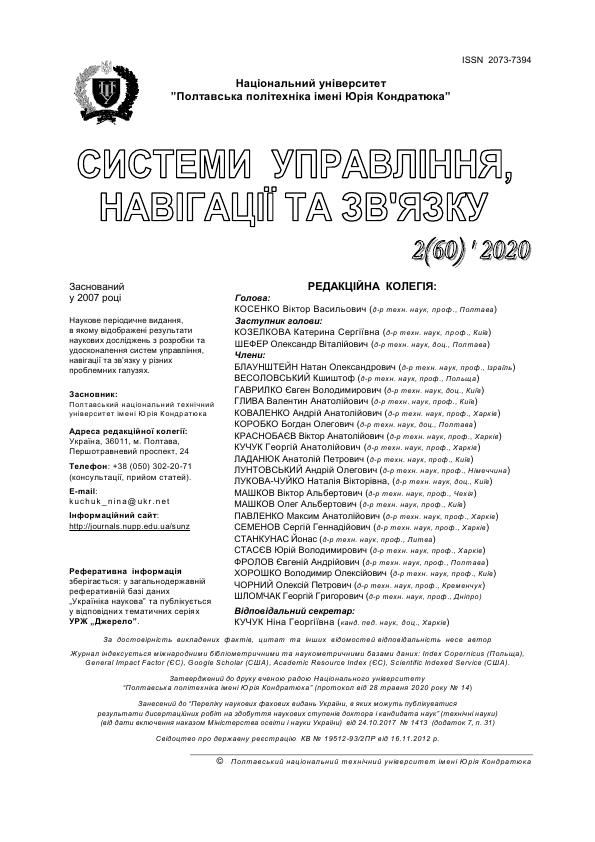EXPLANATION INTERFACE MODEL WITH TEMPORAL PARAMETERS FOR THE RECOMMENDER SYSTEM
DOI:
https://doi.org/10.26906/SUNZ.2020.2.105Keywords:
recommender systems, explanation, formation of recommendations, formation of explanations, criteria for evaluating explanations, temporal rulesAbstract
The subject matter of the article is the process of presenting explanations for personalized proposals in recommendation systems. The goal is to develop a model of the interface of explanations to the recommendations, which takes into account changes in the interests of users over time. Tasks: to define the elements of the temporally-oriented interface of explanations for recommendations based on the structuring of existing approaches to the presentation of explanations; development of an explanation interface model that takes into account the temporal dynamics of user requirements. The approaches used are: approaches to the construction of recommendations based on the similarity of the choice of users and items of user demand. The following results were obtained. Requirements for the interface of explanations with temporal characteristics are formulated. Taking into account the proposed requirements, the structural elements of the presentation of explanations are determined, which give a quantitative and qualitative assessment of the recommendations. The model of the interface for presentation of explanations in the recommendation system taking into account changes of interests of consumers in time is offered. Conclusions. The scientific novelty of the results is as follows. The model of the visual interface for representation of explanations in the recommendation system taking into account temporal dynamics of preferences of users is offered. The model includes groups of visual and interactive elements. Visual components display quantitative and qualitative indicators for the current recommended subject, showing the dynamics of sales or ratings at intervals within a given period of time, as well as the total changes for this period. The interactive components of the interface allow the user to determine the time period for constructing explanations, as well as the degree of detail in time of the temporal characteristics of the explanation. The practical advantage of the proposed model is that the set of static and dynamic indicators, as well as the ability to adjust temporal parameters can meet the criteria of transparency, confidence, effectiveness and persuasiveness to explain the recommendations and thus create conditions for increasing the number of loyal customers and increase sales of recommended itemsDownloads
References
Melville P., Sindhwani V. (2013). Recommender systems. In Encyclopedia of machine learning. Springer, pp.829–838.
Emre S., Sevgi O. (2013). A systematic literature review on Health Recommender Systems. E-Health and Bioengineering Conference, EHB 2013, pp. 1-4.
Gigli A., Lillo F., Regoli D. (2019). Recommender Systems for Banking and Financial Services. Proceedings of the 13th ACM Conference on Recommender Systems, pp. 536–537.
Eirinaki M., Gao J, Varlamis J., Tserpes K. (2018). Recommender Systems for Large-Scale Social Networks: A review of challenges and solutions. Future Generation Computer Systems. 78, pp. 413-418.
Del-Rio F., Parra D., Kuzmicic J., Svec E. (2017). Towards a Recommender System for Undergraduate Research. Proceedings of the Poster Track of the 11th ACM Conference on Recommender Systems (RecSys 2017).
Kim J., Lee J., Park J. Lee Y. (2009). Design of Diet Recommendation System for Healthcare Service Based on User Information. Fourth International Conference. Computer Sciences and Convergence Information.
Jeroen Van Barneveld J., Van Setten M. (2004). Designing usable interfaces for TV recommender systems. Personalized Digital Television, pp.259-285.
Daher J, Brun A., Boyer A. A. (2017). Review on Explanations in Recommender Systems. Technical Report. LORIA Université de Lorraine, 26 p.
Cunningham, P., Doyle, D., Loughrey, J. (2003) An Evaluation of the Usefulness of Case-Based Reasoning Explanation. In: Case-Based Reasoning Research and Development:Proceedings ICCBR. Number 2689 in LNAI, Trondheim, Springer, pp. 122–130.
Cleger S., Fernбndez-Luna J., F Huete J. (2014). Learning from explanations in recommender systems. Information Sciences. Information Sciences, 287, pp.90–108.
Chalyi S., Leshchynskyi V., Leshchynska I. (2019). Method of forming recommendations using temporal constraints in a situation of cyclic cold start of the recommender system. EUREKA: Physics and Engineering, 4, 34-40 DOI:10.21303/24614262.2019.00952.
Chalyi S., Leshchynskyi V., Leshchynska I. (2019). Моделювання пояснень щодо рекомендованого переліку об’єктів з урахуванням темпорального аспекту вибору користувача. Системи управління, навігації та зв’язку, 6 (58), 97-101. – doi:https://doi.org/10.26906/SUNZ.2019.6.097.
Levykin V., Chala O. (2018). Development of a method for the probabilistic inference of sequences of a business process activities to support the business process management. Eastern-European Journal of Eenterprise Technologies, 5/3(95), 16-24. DOI: 10.15587/1729-4061.2018.142664.
N Tintarev, J Masthoff (2007). A Survey of Explanations in Recommender Systems. In G Uchyigit (ed), Workshop on Recommender Systems and Intelligent User Interfaces associated with ICDE’07, 801-810.
Tintarev N., Masthoff J. (2010) Designing and evaluating explanations for recommender systems, in Ricci, F. Rokach, L. Shapira, B. and Kantor, P. (Eds.), Recommender systems handbook, Springer, Dordrecht, 479–510.
Чалий С.Ф., Лещинський В.О., Лещинська І.О. (2018). Моделювання контексту в рекомендаційних системах. Проблеми інформаційних технологій, 1(023), 21-26.




